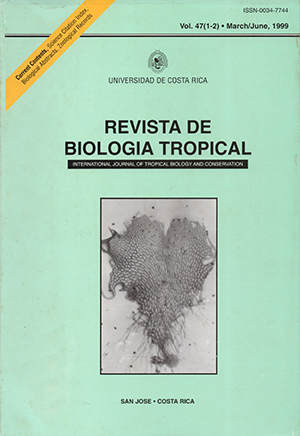Abstract
Observations made in Salta, northern Argentina, for a complete flowering season of five plants from several patches, allowed the authors to conclude: 1. anthesis lasts 9-13 hours and consists of two floral phases, in the last of which the stigma is not receptive; 2. stigma is receptive in the bud when anthers are not dehiscent, hence the flowers are protogynous; 3. nectar is secreted during phase 1 only; 4. the nectar composition fits that of melittophylous plants; 5. rain or drizzle do not affect the nectar composition or pollen viability because they are highly protected but do affect visitation by pollinators; 6. flowers are flag-blossom pollination units with pollen presented on stylar subapical trichomes, adapted to medium-sized hymenopterans, which transfer the pollen on their heads; 7. the ISI and RRS reproductive indeses show that the variety is partially self-compatible, but insect visitation increases reproductive success; 8. individuals of Centris sp. and a breed of Bombus atratus are the most important legitimate visitors because they work on all conspecific plants and suck nectar in few flowers (phase 1) per plant during each visit, while individuals of Bombus opifex, the other breed of B.atratus and Megachile spp. are also legitimate pollinators but less frequent or not constant; 9. some Lepidoptera are nectar robbers because they suck nectar but do not trigger the pollen transfer mechanism.##plugins.facebook.comentarios##

This work is licensed under a Creative Commons Attribution 4.0 International License.
Copyright (c) 1999 Revista de Biología Tropical
Downloads
Download data is not yet available.


